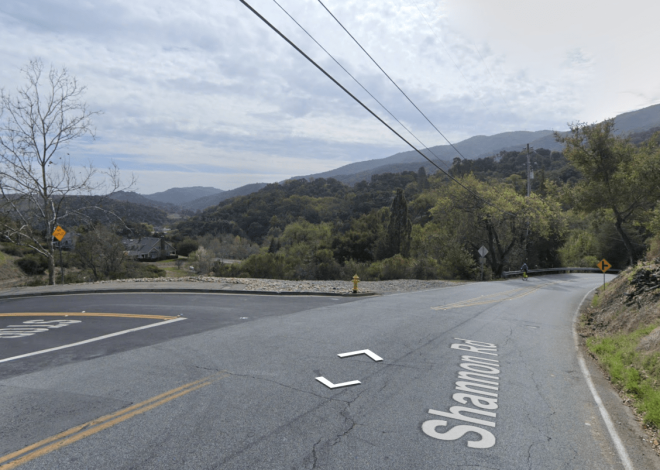
Prop. 36: What to expect right away from California’s new crime law
California’s Proposition 36 was officially enacted over the holiday break, following voters’ overwhelming approval of the initiative aimed at driving down serial theft and fentanyl crimes through harsher prosecution and more aggressive drug diversion policies.
RELATED: New California crime laws seek to deter retail theft, property crimes
County prosecutors across the state now have the latitude to more readily charge theft cases as felonies when they involve a repeat offender, treat fentanyl dealers as potential murderers, and leverage jail time to compel certain hard drug offenders, particularly those consuming powerful opioids, to enter treatment programs.
What changes can residents expect to see right away? It will depend on the county in which they live, said Jeff Reisig, Yolo County’s district attorney and one of the architects of the new law.
“It’s a local control issue,” Reisig said. “Each county and each city will be deciding how aggressively and how quickly these changes are implemented. In some counties, local law enforcement will be empowered to start making felony arrests for retail thefts with priors, drug offenses with priors, and can exercise that discretion immediately.”
“We’re going to see more convictions for retail and petty theft,” he added. “Within several months, our hope, and the promise of Proposition 36, is that there will be an obvious deterrent effect that will result in a reduction of at least some of the brazen crime that was witnessed previously.”
The California Police Chiefs Association, whose current president is Pleasanton Chief Tracy Avelar, said the state’s police departments “are ready to ensure a fair but firm response to repeat offenders, balancing rehabilitation with accountability.
“Continued criminal behavior will result in consequences because the safety of our communities is non-negotiable,” Avelar said in a statement. “Overall, if you’re a repeat offender, don’t expect a cite and release.”
Proposition 36 institutes several changes to the state penal code. Regarding serial theft, prosecutors are now allowed to widely aggregate multiple thefts to reach the $950 felony threshold that elevates theft crimes to felonies.
The new law also empowers prosecutors to charge a felony for any theft if the arrestee has two prior theft convictions, whether felonies or misdemeanors. New charging and sentencing enhancements for organized retail theft were also added to the books.
In Santa Clara County, where Jeff Rosen was one of just three California district attorneys to support 2014’s Proposition 47, which established many of the laws now amended by Proposition 36, prosecutors are grappling with the new law.
Rosen’s office has long been strategic with which theft defendants warrant more aggressive prosecution based on serial offenses and the threat they pose to the public, Assistant District Attorney David Angel said. He added that many of the legal tools offered by Proposition 36 can’t be readily implemented.
For instance, determining at the time of an arrest whether a theft suspect has two prior convictions that would warrant a felony arrest – and corresponding jail booking and review by a magistrate judge – is complicated by the fact that misdemeanor convictions are routinely expunged. An arresting officer, Angel said, might not have immediate access to clarifying information, impeding the goal of swiftly taking serial offenders off the street.
“The way this law has been written, if police did that on every case, it would require an extraordinary amount of time to figure out whether someone had a valid conviction or that it was dismissed,” Angel said.
The other major dimension of Proposition 36 addresses drug crimes. Under the new law, fentanyl dealing and possession of fentanyl while also being armed mandate prison time upon conviction, and murder charges are possible for anyone who sells fentanyl to a person who then dies from the drug.
People charged with repeatedly possessing hard drugs, including fentanyl, also could be presented with the option of entering drug treatment — and dismissed charges upon completion — in lieu of jail time.
The drug component continues to prompt debate over whether many of the state’s counties have enough rehab capacity to handle a potential influx of people who opt for the treatment route; Proposition 36 does not provide any new funding.
Reisig acknowledges that it will be years before treatment options can achieve the goals set out by the law’s co-authors.
“It’s going to take some time, it’s not going to happen overnight,” he said. “There will be slow deployment and a buildup of drug courts over the next year. As the pieces come back together, as services and treatment teams come together, we will see more people go through those programs.”
Angel said nothing in the law addresses the existing limits of treatment capacity, especially in a heavily populated jurisdiction like Santa Clara County.
“There are structural barriers to getting people in treatment. Mainly, there is not enough of it,” he said. “This law does not change those structural barriers, but we hope it will allow us to focus on these high utilizers.”
Silicon Valley De-Bug, a South Bay civil-rights group, sent a letter co-signed by over 70 local social-justice organizations to Rosen’s office, asking local prosecutors to use discretion “to shield the community from the harm Proposition 36 is designed to impose on our people. … The initiative, if implemented without critical protections, will further incarcerate the poor, those suffering from mental health and substance use issues, and disproportionately impact people of color in Santa Clara County.”
Related Articles
During police interview in child porn bust, Berkeley man allegedly confessed having a ‘crush’ on ex’s prepubescent sisters
Oakland man got 32 years in Richmond homicide
‘A huge heart’: Man paralyzed as teen in 2004 shooting outside Oakland high school dies 20 years later
New California crime laws seek to deter retail theft, property crimes
Ex-Oakland youth swim coach sentenced to prison for sexually abusing student
Critics of the new law argue that by rolling back provisions of Proposition 47, which reclassified many low-level felonies to misdemeanors, the state is returning to the mass incarceration that led to prison overcrowding, landmark court rulings and the necessity for the reforms.
Reisig again points to the discretion given to prosecutors to apply Proposition 36 and highlights how judges will ultimately be the backstop for any overstepping.
“I’ll use my discretion as soundly as I can, and there’s a judge at the gate,” he said. “I fully expect that judges will overrule some of our decisions and implement their views, which is fine. That’s how the system works.”
Angel says while many uncertainties remain on how Proposition 36 can and will be instituted, he and his office take seriously the message sent by voters in passing the initiative by more than a 2-to-1 margin.
“We believe and hope this will allow all of the police, and the courts, and certainly our office and the county, to focus resources to making sure people creating a public safety or quality of life threat to our community can be directed to treatment,” he said. “Proposition 36 should focus that discussion, and we intend to use it in that way.”


